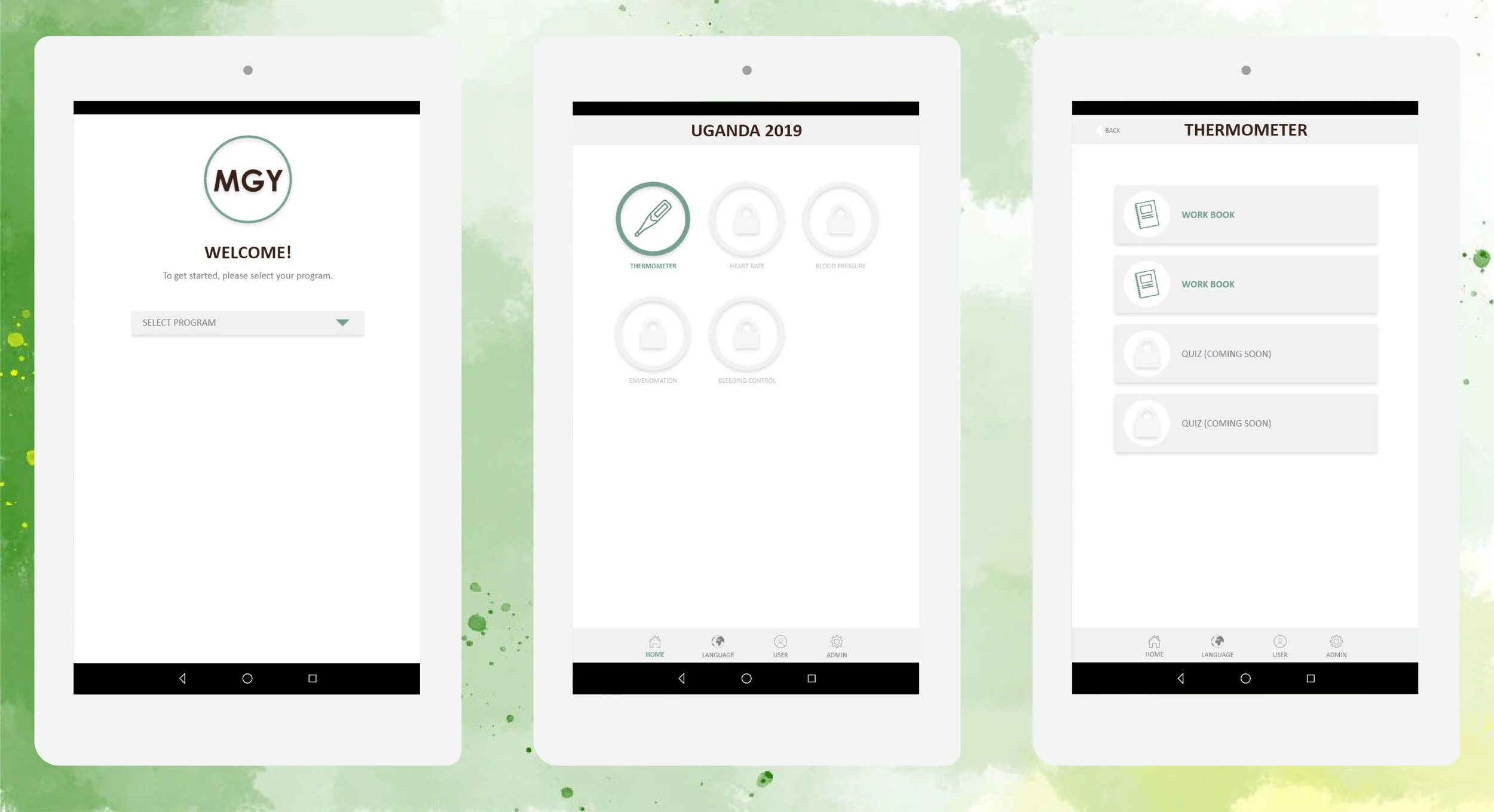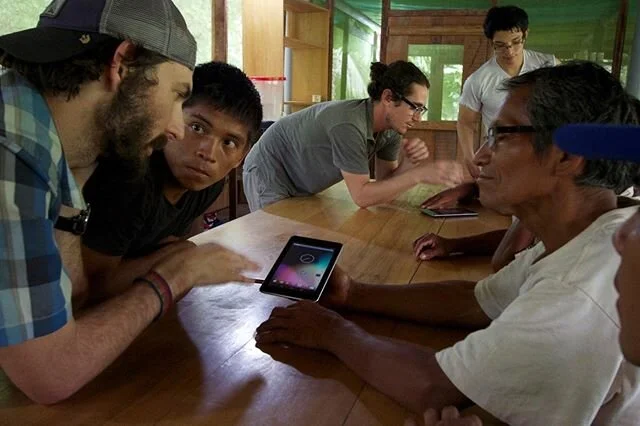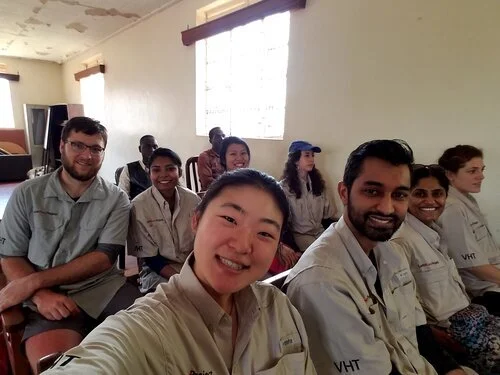m-health learning app
MGY is a 501c3 with the goal to expand health systems in underserved areas that face tremendous barriers to accessing healthcare. MGY partners with local organizations in target communities to train community health workers with the help of a mobile app. I led the redesign to improve the usability and clarity of the app.
View Our Prototype
ROLE
Lead designer — discovery, wireframes, user research, UX/UI design. Phase 1 was made possible by Aquent’s 2019 Designing for Good Grant.
TEAM
Daniel Ebbs, DO, MGY Co-Founder
Sam Waggoner, Software Engineer Lead
David Tseng, Software Engineer
SOFTWARE
InVision, Hand Sketches, Adobe XD
TYPE
Volunteer
the PROBLEM
Community Health Workers are non-professional health providers who are members of the communities they serve. MGYs mobile app educates CHWs with training media such as presentations, videos, and quizzes. With this redesign, attention was paid to enhancing its usability, adding key features, and incorporating graphic design elements that better reflect MGY’s brand.
Phase 1: Modifying existing content
An exploratory phase with the developers and MGY directors was needed to assess short-term and long-term goals. Our metrics are based on functionality, aesthetics, and analytics.
FUNCTIONALITY
Adding missing features
Re-thinking current user flow (CHWs vs MGY Volunteers)
AESTHETICS
Minimalism
UI as way-finding
ANALYTICS
How can MGY monitor success
First Wireframe Iteration
Before (Left) and After (Right)
Research
there are two main users with very specific needs. Looking at the existing app, it soon became evident that additional features were needed to create a flow that would benefit both CHW’s and MGY volunteers.
USER A: CHWs
Create an account & view account details
Easily access learning materials
Ability to change language
Not able to delete/edit data on the app
USER B: MGY VOLUNTEERS
Upload results to server
Edit user information
Download different learning programs
Key Features
Changing Between Programs: A simple change that resulted in streamlined work processes. Previously, users could not change between different learning programs (i.e. Uganda vs Peru) -- developers had to uninstall the entire app and install a duplicate copy with the new program’s learning material. This doubled the work-load of the development team and made it impossible for MGY volunteers to make changes themselves on the ground.
Admin Tab: A password protected admin tab was created so only MGY Volunteers could access certain features.
Create User without Login Credentials: An important factor to consider is that CHWs have very little experience with software. We were hesitant to have them create a username & password, but in order to monitor success, we needed to still track who was using the tablet. By giving only MGY volunteers access to editing user information, we were able to bypass login credentials for CHWs
Next Steps
Phase 2: Improving and expanding
Testing phase 1 with COmmunity Health workers and MGY volunteers is a crucial next step to make this program successful. Another goal of the design team is to expand and improve current functionality that wasn’t included in Phase 2.
FUNCTIONALITY
Progression of learning
Adding multiple languages
Testing Phase 1 user flow and modifying design based on user feedback
AESTHETICS
Exploring a visual representation of progress
ANALYTICS
Quantifying videos watched, # of times workbooks accessed, etc.
Preliminary Phase 2 Sketch





